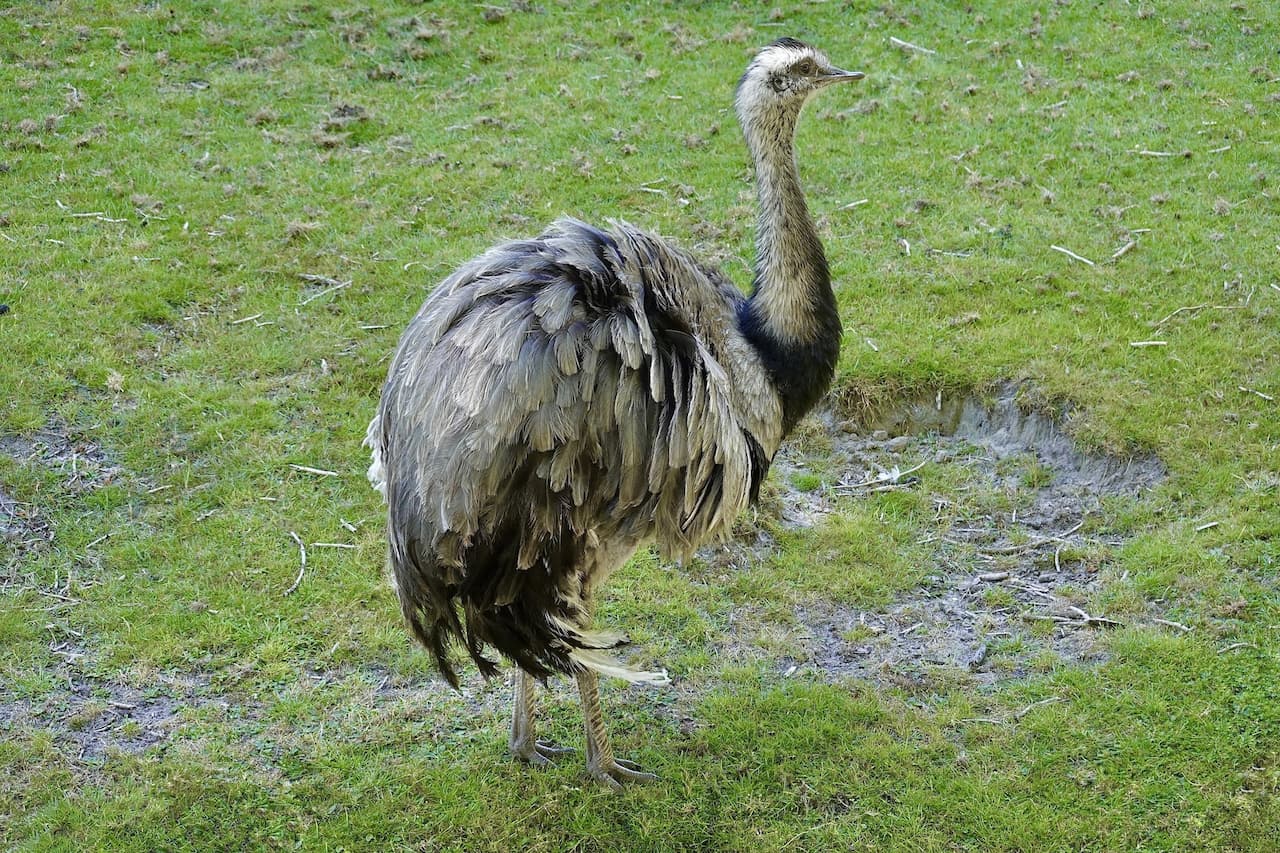Eared Poorwill (Nyctiphrynus mcleodii)
The Eared Poorwills (Nyctiphrynus mcleodii) are endemic to Mexico.
The nightjar, as suggested by the name, is strictly nocturnal. Throughout the day, it typically rests quietly in densely vegetated hiding places. At night, they become active as they hunt flying insects in more open landscapes, such as forest clearings, wetlands, and along rivers.
Their cryptic appearance blends perfectly into their habitat and they are very difficult to spot during the daytime. They are most easily detected at night when light from car headlights is reflected ruby-red from their eyes, as they are sitting on tracks or roads. However, their presence is most often made known by their loud calls at dusk.
The Eared Poorwill is commonly heard within its range, but less often seen – due to its nocturnal habits. Its brown-mottled plumage keeps it well camouflaged during the day when it is also usually hidden away from sleeping.
Alternate (Global) Names
Chinese: ??? … Czech: lelek mexický, Lelek ouškatý … Danish: Mexicansk Poorwill … Dutch: Mexicaanse Poorwill … German: Ohrennachtschwalbe, Ohren-Nachtschwalbe … Estonian: võru-öösorr … Finnish: Meksikonkehrääjä … French: Engoulevent aztèque … Italian: Succiacapre ciuffato di McLeod, Succiacapre di McLeod … Japanese: mekishikomimiyotaka … Norwegian: Dusknattravn … Polish: lelek meksykanski, lelek meksyka?ski … Russian: ??????? ????????, ??????? ??????? … Slovak: lelek aztécky … Spanish: Chotacabras Prío, Pachacua Prío, Tapacamino Prío … Swedish: Mexikansk nattskärra
Distribution
The Eared Poorwills occur in western Mexico where it occurs on the Pacific slope from Chihuahua through Jalisco, Colima, and Guerrero south to Oaxaca (Howell and Webb 1995a). It is fairly common in areas with suitable habitats, such as subtropical or tropical dry forests and moist montanes.
Subspecies and Ranges
This species is sometimes placed in the genus Otophanes together with the Yucatan Poorwill (Otophanes yucatanicus).
Recognized subspecies and their ranges:
- Nyctiphrynus mcleodii mcleodii (Brewster, 1888) – Nominate Race
- Range: Northwestern Mexico (Chihuahua and southern Sonora to Jalisco and Colima)
- Nyctiphrynus mcleodii rayi (A. H. Miller, 1948)
- Range: Mexican state of Guerrero in Southwestern Mexico.
Description
They are medium-sized nocturnal birds with long pointed wings and very short bills. They have short legs and small feet, of little use for walking. Their soft plumage is cryptically colored to resemble bark or leaves. They blend perfectly into their habitat, making them very difficult to spot during the daytime, when they are usually hidden away sleeping. Their presence is most often made known by their loud calls given at dusk.
Nesting / Breeding
The male establishes his territory and sings at night to keep rivals away and at the same time to attract a female.
Nightjars don’t actually construct a nest, as most other bird species do. They simply place the eggs on the ground on open soil covered with dead leaves.
Nesting appears to be timed in such a way that the moon is more than half full at the time they are feeding their young – likely as the additional light during the night facilitates caring for the young and foraging for food.
The female may lay one to two eggs (mostly two) that are whitish or creamy in color, with brown and grey spots or blotches.
During the day, the incubation of the eggs is undertaken by the female, while both parents share the incubation at night. The incubation period is about 19 to 21 days.
The chicks are covered in down. They are capable of short-distance movements within 24 hours of hatching. The male usually stands guard and defends the nest and the young. He will hover in place near the nest with his body in a nearly vertical position. Both adults communicate with their young via soft clucking sounds to which the chicks respond.
The parents feed the young regurgitated food (insects), and they continue to brood them until they fledge. The young take their first flight when they are about 20 to 21 days old.
If conditions are favorable, the female may lay a second clutch close to the first and while she is incubating the new set of eggs, the male continues to care for the young from the first brood.
They have developed several behavioral adaptations to minimize predation:
- Their nocturnal (night) lifestyle reduces the likelihood of being detected by daytime predators. During the daytime, they typically sleep on the ground where they are perfectly camouflaged by their “earthy” colored plumage. They almost always change their roost sites on a daily basis.
- When nesting, they sit quietly on the eggs, minimizing any movements that could get them detected.
- If an intruder does get close to the nest, the parents may try to lead them away by first flushing off the nest and when landing feigning injury as they lead the potential thread away from the nest. While the parent performs this distraction display, the young may scatter and freeze.
- The parent who is not incubating the eggs or brooding the young will roost away from the nesting area.
- They may also move the eggs or young to prevent them from being preyed upon.
- Nightjars avoid voicing when they hear the calls made by predatory nocturnal animals, such as owls.
The Feeding Habits of Nightjars / Nighthawks



